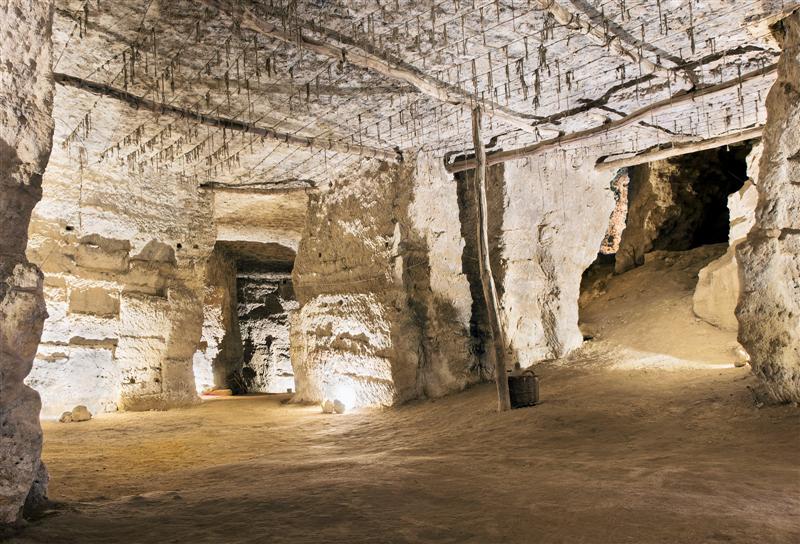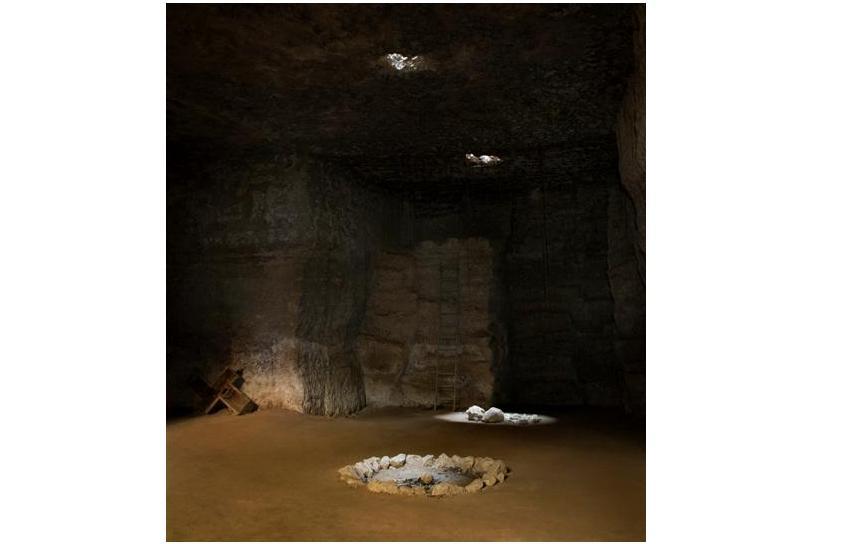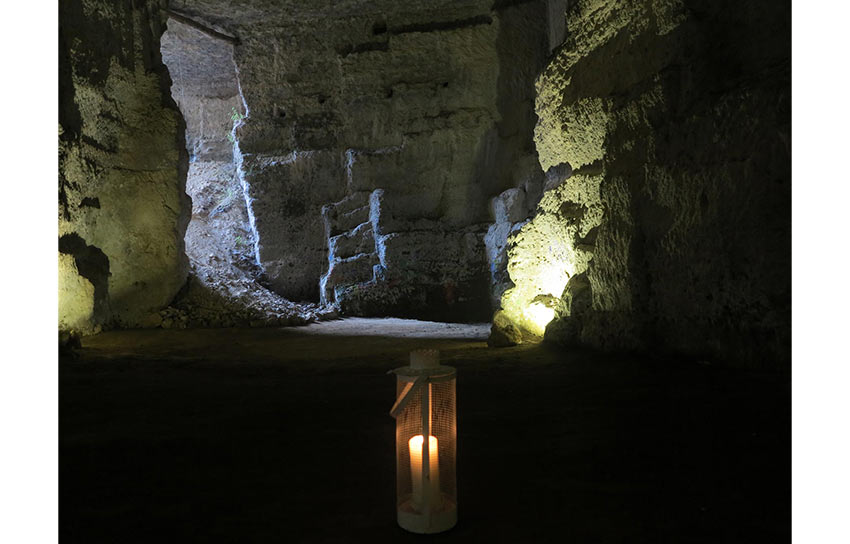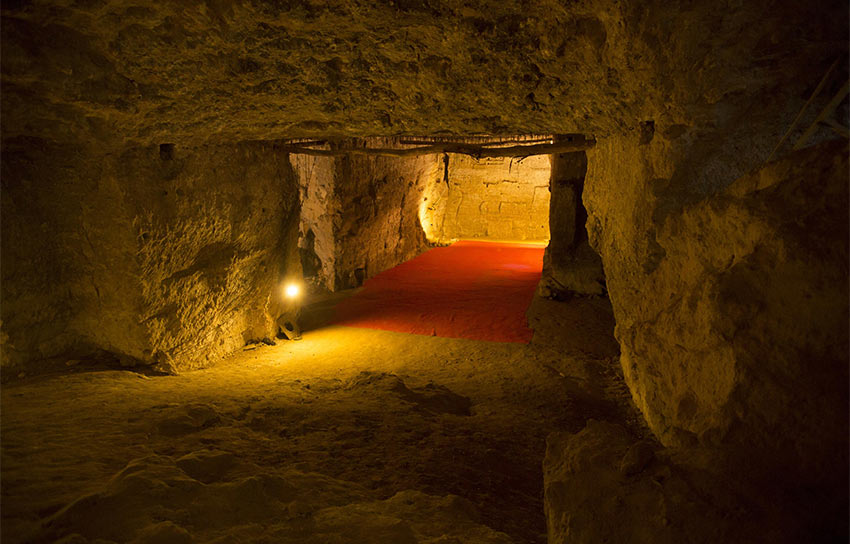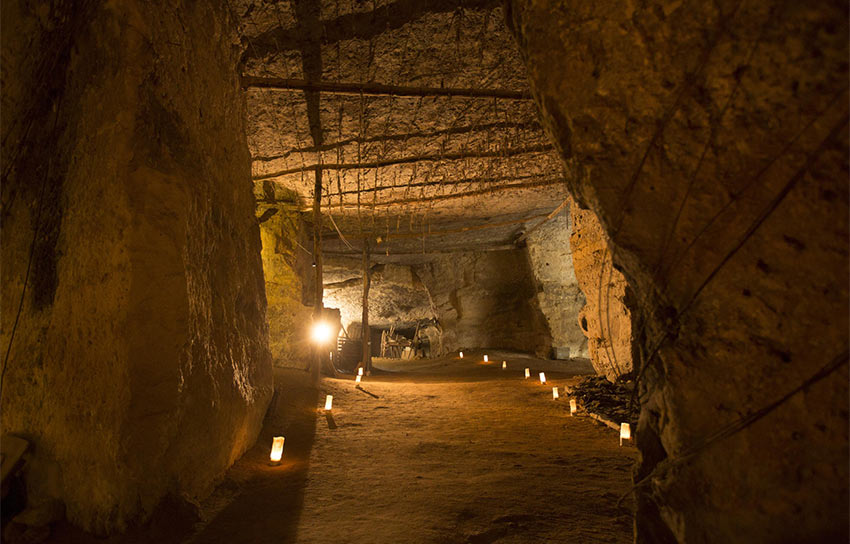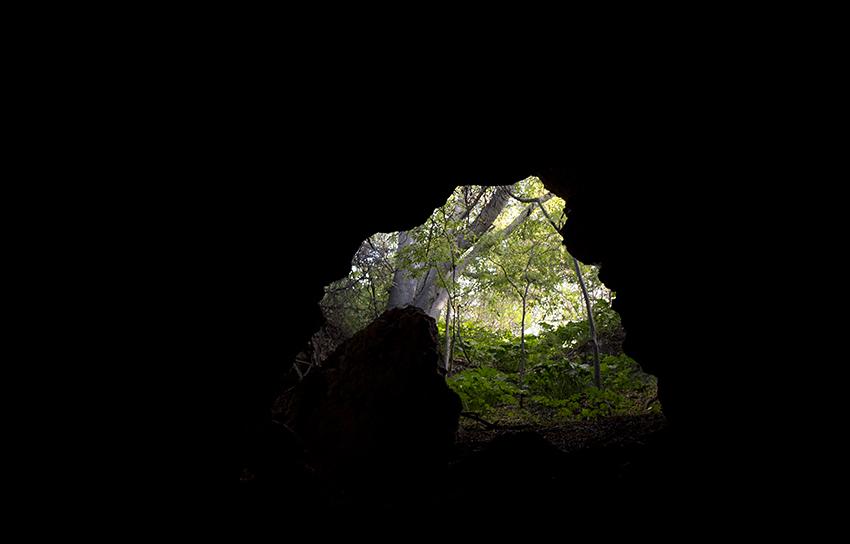The Stone Quarry
Visit our quarry caves and be amazed by the space created by human effort in the course of extracting stone from the bowels of the earth. This unique site lies at the northern limits of the farm, at the edge of the Sierra Morena .
Silently it awaits human enjoyment of art in all its forms: music, theatre, dance; a perfect setting for contemplation and meditation. Also for meeting and workshops of arts area.
FEATURES
The quarry caves extend over some 700 square metres, and comprise several vast spaces that were created in the course of working the stone-faces. Each of these rooms is unique, one of the central “halls” being regularly used for musical performances, theatre, personal development courses, biodance, meditation and play-oriented encounters.
The caves are located just below the edge of the Sierra Morena. This area is characterised by a geological fault that continues for several kilometres and that includes a series of caves. Its lime-sandstone bedrock is the raison d’être of the stone quarry.
iT keeps the same temperature along the year, around 15-20 degrees, which makes a fresh spot for or hot summers.
This unique space can be entered via a open space of some 3000 m2, which may also have been excavated in the early days of the quarry. This area currently houses the old stables and our House Tierra, the only troglodyte dwelling in the province....
HISTORY
All indications are that the quarry served, as in the quarry Peñatejada( In Cordoba) to erect buildings of Corduba Patrician Colony. "It is known that the workers who built the Pyramid Tetrapylon Circus Vienna or the Black Gate Trier, extracted crude blocks from the nearest quarries, the animal load hauled up on site and finished frame them under the buildings under construction (...) These underground quarries are known as the fossae type: holdings in galleries with large halls for greater benefit of the rock mass, while more expensive, were common throughout the Mediterranean basin which has survived today as some Italian examples of Grotta Oscura tufa, or Cappellaccio Aniene in the Latium region "(Fernando Penco Valenzuela) along Cordoba to these examples.
During the 1950s, the caves were used to dry tobacco, which was one of the crops cultivated on the farm at the time. For this purpose, a timber scaffolding that can still be seen was erected under their roof. Since then, the caves have been used to store farm machinery, to produce organic compost by vermiculture and most recently, as summer stabling.
KEEP ON READING AT "EVENTS OR ACTIVITIES"




